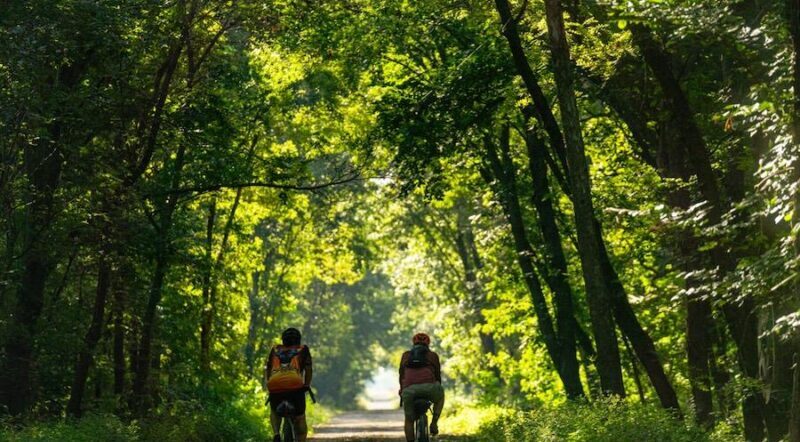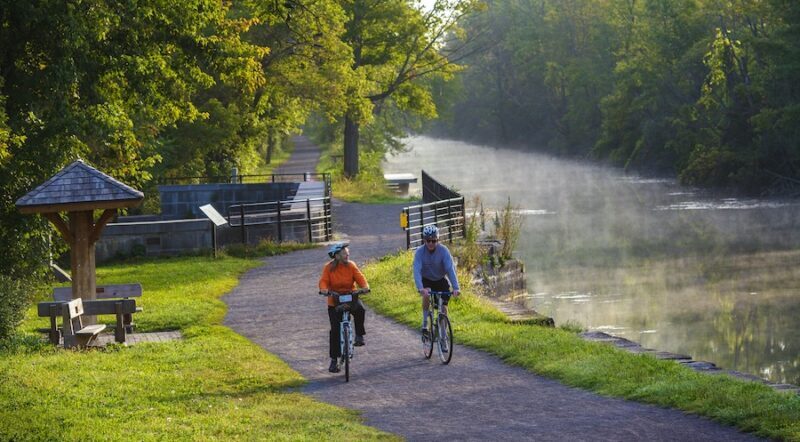Riverfront Trail Offers Glimpse Into the Heart of Kansas City
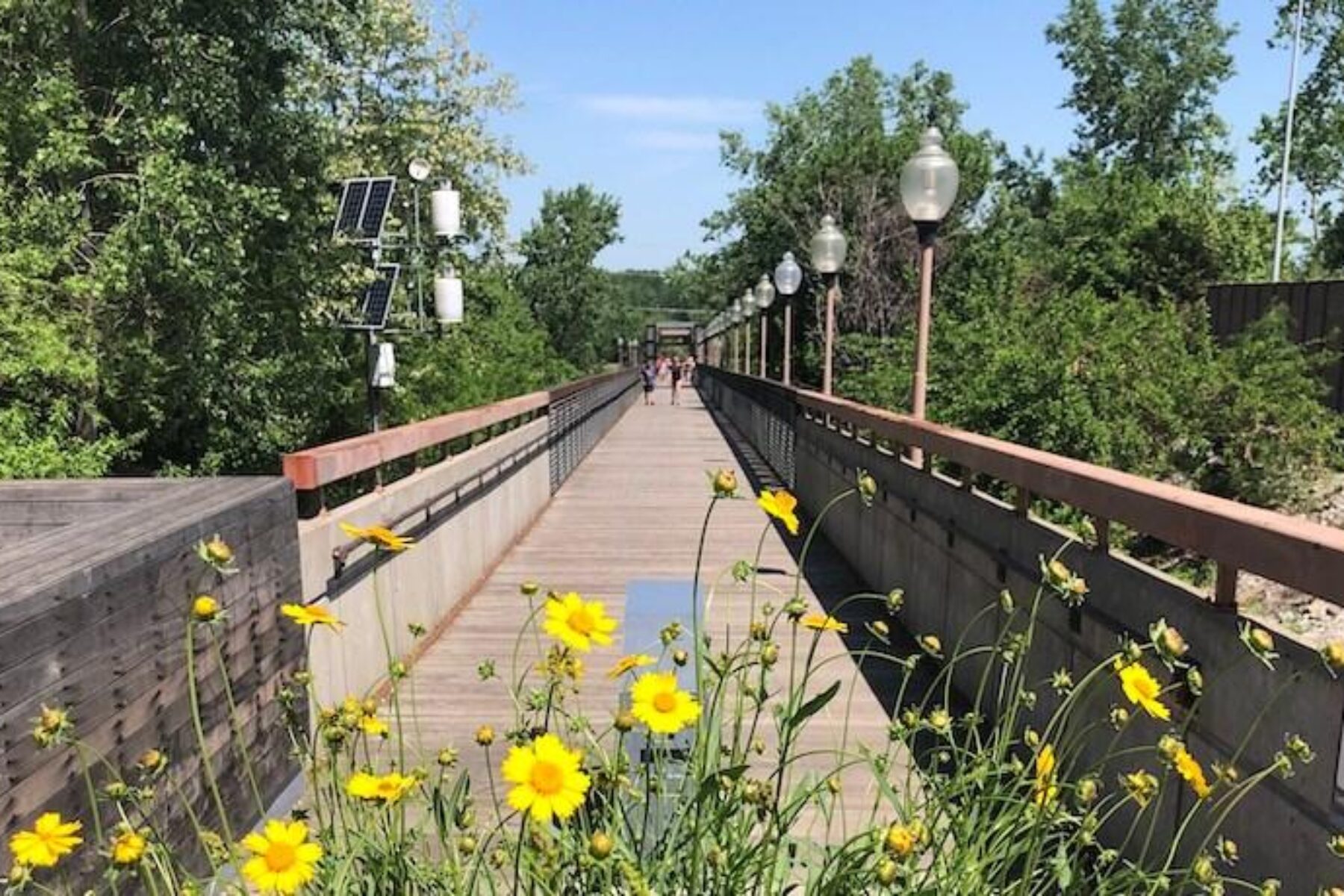
Kansas City’s Riverfront Heritage Trail weaves together history, river vistas and commerce.
In 1804, Captain William Clark of Lewis and Clark expedition fame made an entry in his journal during a rest stop at the meeting point of the Missouri and Kansas rivers. Among his observations: The countryside at the confluence was very fine.
Even 218 years later, it’s hard to argue with Clark’s portrayal. The spot known as Kaw Point does indeed offer a fine view—the two mighty rivers coming together, the wooded bluffs bordering them and, today, the shining skyline of downtown Kansas City, Missouri, across the river.
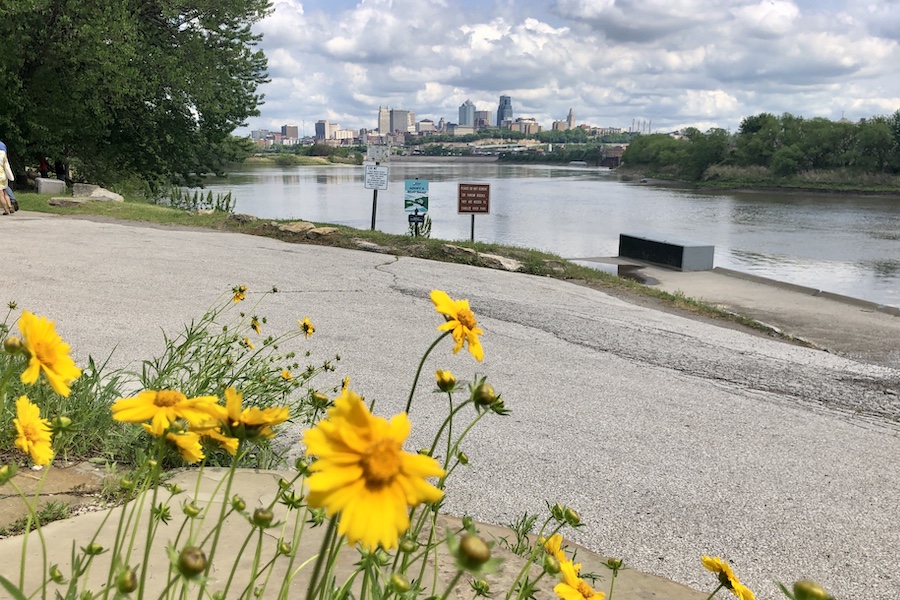
Kaw Point Park is one of the many highlights on Kansas City’s 15-mile Riverfront Heritage Trail. Along the way, the bike/pedestrian pathway takes in not just the two rivers, but two states, three counties, three cities, countless neighborhoods, bustling retail centers and vast industrial areas.
To say the route of the Riverfront Heritage Trail is diverse is a bit of an understatement. Rather than exclusively following the banks of the Missouri River, the Riverfront Heritage Trail takes a more circuitous path, following the river for a time but also crossing over busy interstate highways, running through the vibrant River Market area, and dipping into the West Bottoms area that once teemed with stockyards and meat-packing houses.
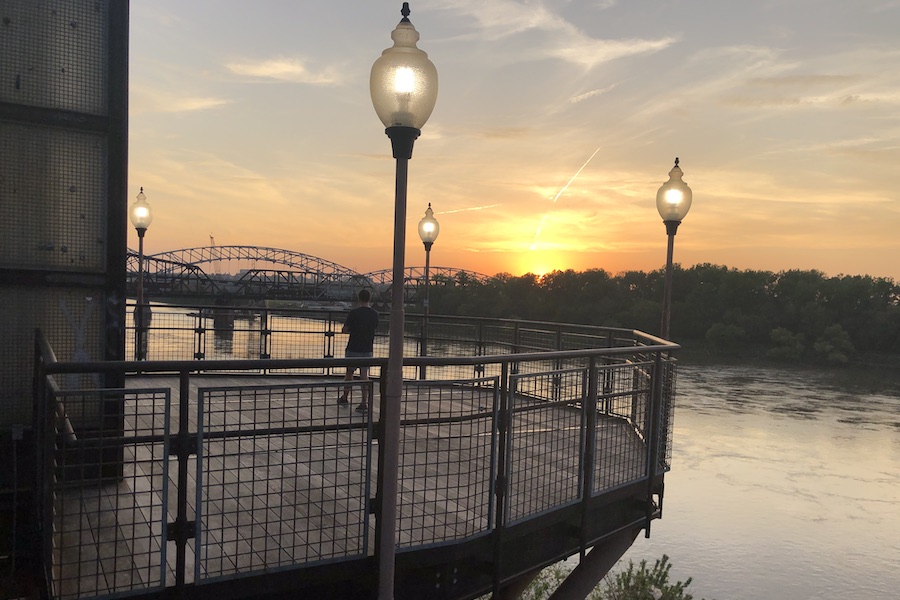
Ride or walk the Riverfront Heritage Trail, and you’re sure to come away with a sense of seeing the real Kansas City. From the leafy Kaw Point, where family groups meet for parties and boat launchings, to the iconic Town of Kansas Bridge with its stellar sunset views over the Missouri River, to the well-groomed Berkley Riverfront, where young people ride bikes and scooters past a series of soaring bridges, the trail is obviously a well-used and well-loved community amenity.
Visitors to Kansas City will find a crash course in the region’s history.
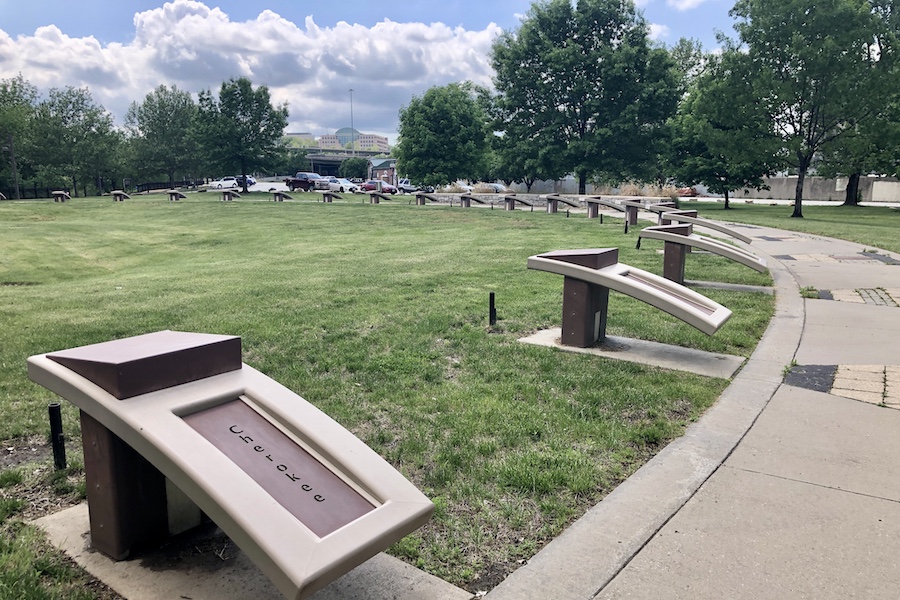
The histories of the Indigenous people who were once active in the area are highlighted.
Stories of Lewis and Clark’s famous exploration are showcased as a part of the Lewis and Clark National Historic Trail, which travels through Kaw Point Park. Memorials and interpretive signs tell the stories.
At Kaw Point Park, the names of nearly 20 Native American tribes that once called the region home—from the Cherokee to the Kansa to the Wyandotte people—are inscribed in signs arranged in a circular memorial overlooking the river.
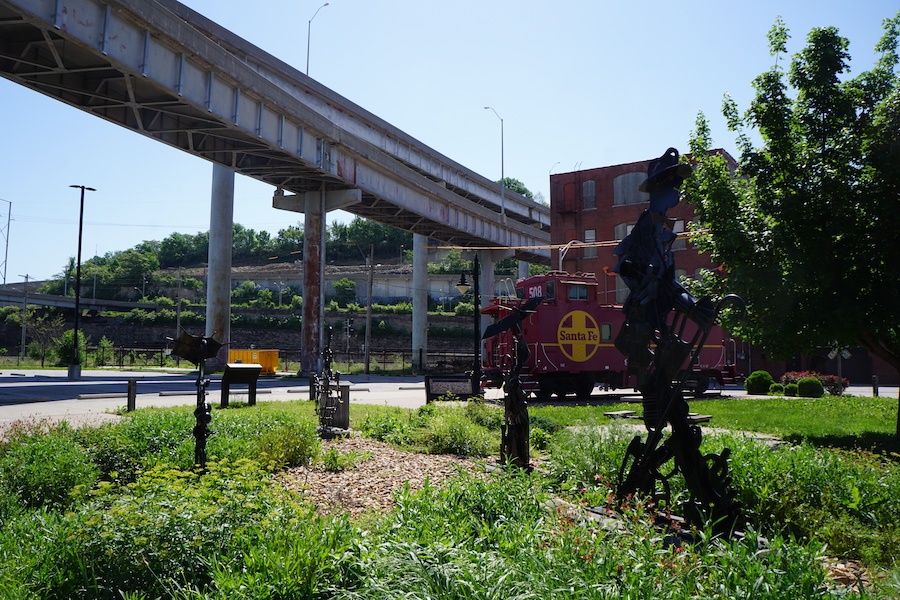
In the West Bottoms area, trail users will find the Freedom Trail Memorial, which poignantly tells of the stories of people who escaped slavery and headed toward the promise of freedom in the state of Kansas, just across the river. The memorial is a part of the African American Heritage Trail, and a sign at the site notes that a key station on the Underground Railroad was located just 2 miles away in the river town of Quindaro, Kansas.
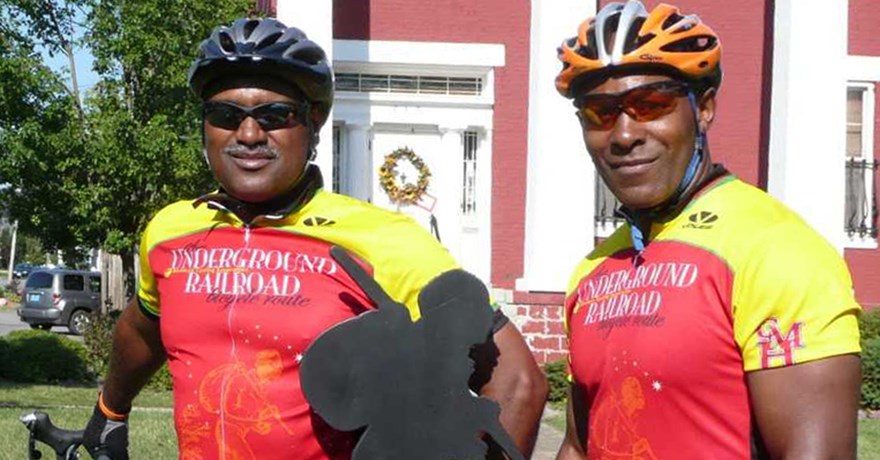
The Riverfront Heritage Trail—a rail-trail—also delves into the railroad history of the United States. It runs alongside working railroads in places and offers sweeping views of the Hannibal Bridge, located at the site of the first permanent rail crossing over the Missouri River.
On their website, Kansas City River Trails, Inc. lists a number of the route’s objectives, including rediscovering the Kansas and Missouri rivers and educating citizens about the history and culture of Kansas City. With its remarkable focus on the region’s lively river scene and fascinating cultural heritage, there is no doubt that the trail lives up to those goals.

Donate
Everyone deserves access to safe ways to walk, bike, and be active outdoors.
